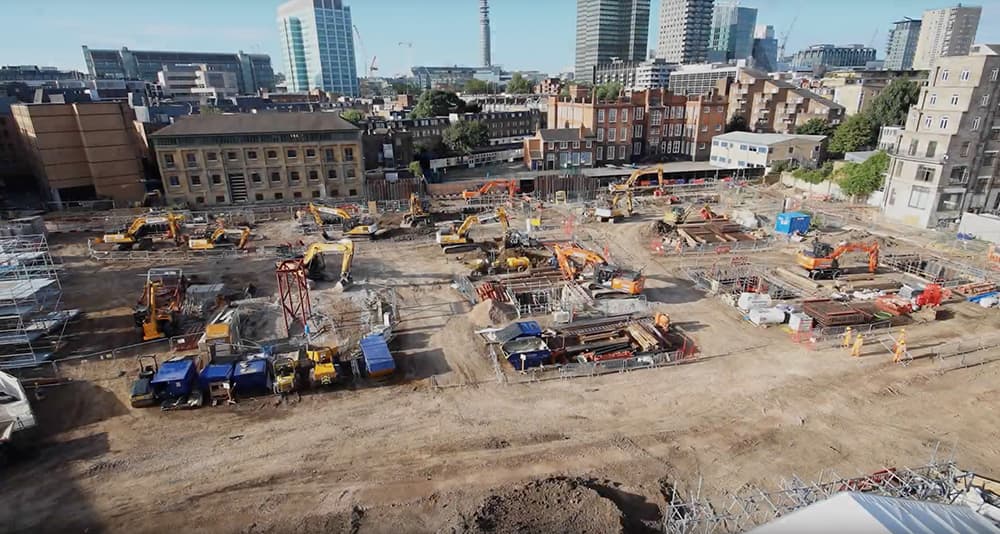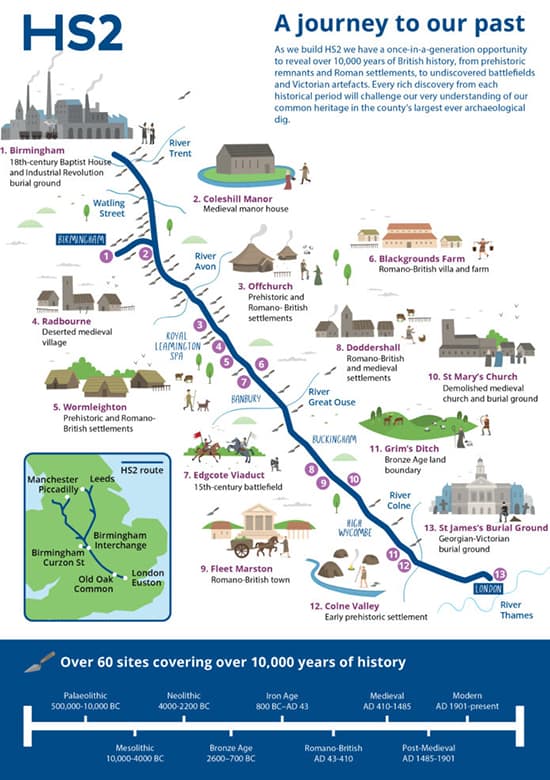Work on HS2 Creates UK's Largest Archaeological Dig
- Youtube Views 6,490 VIDEO VIEWS
WORK is continuing on the controversial high-speed railway between London and Birmingham known as HS2.
Last month, engineers and construction workers erected a 10,000 square metre scaffold structure next to Euston Station in London to allow archaeologists to carry out important historical research.

Above: Historical research is being carried out at St. James Garden, a former cemetery in central London (image courtesy of HS2).
While digs will be carried out along the 150-mile route by more than 1,000 archaeologists over the next two years, the focus in London is St. James Garden, a cemetery from 1790 that was converted into a public park in 1887.

Above: A diagram showing the extent of archaeological research along the route of HS2 railway (image courtesy of HS2).
Archaeologists will also be excavating a similar former burial ground in Birmingham, and are looking to compare and contrast the lives of the inhabitants in the late 18th and early 19th century in the different cities.
Researchers have already uncovered prehistoric tools, medieval pottery and Victorian time capsules, but expect to investigate other historical places, such as a Roman-British settlement, medieval manor houses, villages impacted by the Black Plague and a WWII bombing decoy in Lichfield.
The video below highlights the extent of archaeological work taking place across the HS2 route.
Above: Footage showing how HS2 will aid our understanding of Britain's past (image courtesy of HS2).
A documentary on the historical findings uncovered during the construction of Britain's second high-speed railway is set to air on BBC 2 in the UK by 2020.








